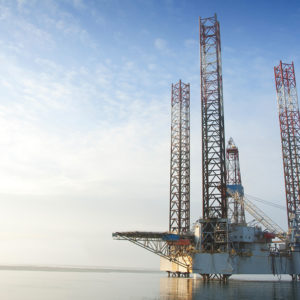A federal judge just dealt a blow to the economy — and our nation’s security.
Sharon Gleason, a District Court judge in Alaska, blocked one of President Trump’s executive orders that seeks to expand offshore oil and natural gas drilling. In response to the ruling, the administration indefinitely delayed its rollout of a detailed five-year plan to spur offshore energy development in the Gulf of Mexico as well as the Atlantic and Arctic oceans.
This delay will prevent American energy companies from extracting our offshore oil and gas riches. Workers will lose out on job opportunities. And the nation will lose out on valuable sources of fuel that could reduce our reliance on hostile petro-states like Venezuela and Russia.
For the sake of our workers, and our national security, let’s hope the administration reverses course and finalizes its offshore energy plan.
A few months after taking office, Trump signed an executive order opening federal offshore territories to energy exploration. Ever since, the Interior Department has been working on a plan to open up much of the outer continental shelf — the undersea land between three and 200 miles off the coasts — to development. Nearly 90 billion barrels of oil and 328 trillion cubic feet of natural gas may lie beneath the outer continental shelf — enough to heat America for two full years. The United States is on the cusp of complete energy independence — a goal that seemed impossible just a decade ago. Advances in the drilling technique known as fracking have enabled companies to tap previously inaccessible oil and natural gas deposits trapped in underground shale rock formations.
From 2010 to 2017, oil production shot up more than 70 percent. Thanks to this fracking boom, the United States has reduced its reliance on hostile or unstable oil-rich nations. Oil and petroleum imports from Russia dropped nearly 40 percent from 2010 to 2017. Last year, oil imports from Saudi Arabia reached their lowest levels since the 1980s.
However, we’re not completely independent. Saudi Arabia and Iraq are still among the top five sources of U.S. petroleum imports, according to the Energy Information Administration’s most recent data. Venezuela and Russia remain in the top 10. Offshore energy could enable us to break our foreign oil habit once and for all. Offshore production accounted for 16 percent of all U.S. crude oil production in 2018, increased by about 30 percent between 2013 and 2017, and is now pushing 1.7 million barrels per day. Expanding drilling to areas of the outer continental shelf that President Obama declared off-limits would raise that figure substantially. It also would create 840,000 jobs and generate a cumulative $200 billion in government revenue by 2035.
Environmental activists have scared people into believing that offshore drilling is unsafe. The Natural Resources Defense Council warns that “the only sure way to prevent offshore oil spills, of course, is to abandon drilling for oil offshore.” That’s simply not true. The oil and gas industry has redoubled its efforts to make offshore drilling safer than ever. Since 2010, the oil and natural gas industry has revised or implemented more than 100 new safety regulations to protect against spills. All energy harnessing involves some risk, but the activists just yell “no” and never have a workable plan for affordable, scalable, reliable energy that already exists today.
There’s no good reason for the administration to stall its offshore expansion plan. Judge Gleason’s ruling is legally dubious — her opinion rests on the absurd notion that Trump lacks the authority to overturn Obama’s energy policies. Her ruling will likely be overturned. Further, the judge appears to be abusing her power by invoking a nationwide injunction for a matter that is in her court. Workers are eager to tap America’s immense offshore oil wealth and put the nation on the path to full energy independence. It’s time for the administration to let them.

